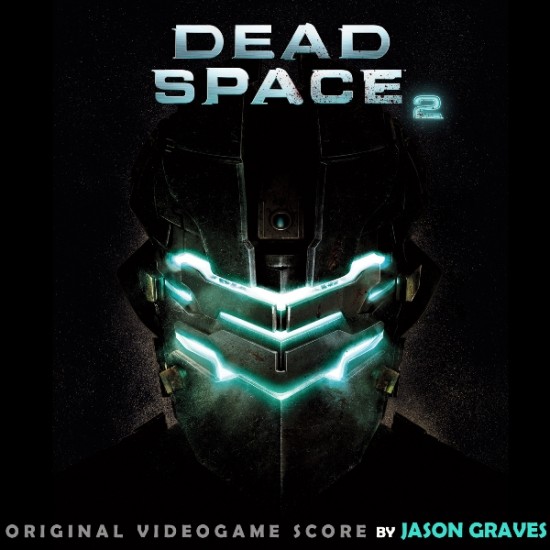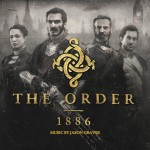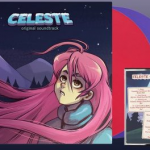Jason Graves’ score to Dead Space is absolutely terrible. And I mean terrible like Ivan the Terrible – invoking fear; terrifying. Much like the game it scores, this soundtrack did not have an ounce of levity or beauty in a conventional sense. Was it an absolute work of art? Without a doubt. But, it was among the most difficult listening experiences due to the sheer volume of aleatoric music and percussion/brass blasts designed to scare the living bejesus out of you. And it worked. However, unlike last years Dante’s Inferno which also contained a huge amount of terrifying horror music, there are very few beautiful moments in Graves’ first Dead Space outing and it simply follows the game’s lead which, too, cannot crack a smile or give us much besides the horror element. This is absolutely fine with me as I made it one of my top picks of 2008.
We have been very fortunate these past several months as “sequel scores” like Bioshock 2, God of War III, Call of Duty: Black Ops, Fallout: New Vegas, and several others have come to the dance with flying colors surpassing their predecessors in all the right ways. How does Graves fare this time? Is his score as “terrible”? And I wonder if he flinches knowing that I referred to his score as “terrible” even being very clear that I am referring to the definition meaning “terrifying.” Click the jump to find out the answers to these questions! Well, the first two at least.
Like the aforementioned sequels, Jason Graves’ Dead Space 2 surpasses its predecessor with dazzling aplomb. It is entirely terrible and scary. However, thanks to the more heavily-emphasized emotional element to the game, as well as the fleshed-out character of Isaac Clarke, Graves shows some staggering string and melody writing that is moving, unsettling, mellifluous, and tragic. “Isaac, Are You There?” begins the soundtrack for strings modulating momentarily with broken chords. This gives way to a lead string which introduces us to a theme of sorts. But, don’t get too excited. Just as we begin to feel comfortable, the musical terror begins. Rounding out the track is an inspired percussive chase. This track should accompany music theory textbooks when dealing with the subject of tension and release.
“It Had to Be Unitology” begins tonally with a cello playing a minoric theme interrupted by a clash of violins. This usage of strings as ambient noise – the waning sound of the bow falling off the instruments – complemented by a low drone creates a dazzling effect when combined with bells later on in the track. Simply put, this piece is downright spooky because you don’t know when (or if) it will burst.
One of the big complaints about the first Dead Space game was the lack of varied environments (it never bothered me). Dead Space 2 answers this call in spades including a visit to “Titan Station Elementary.” Some people are freaked out by creepy kids. If you’re one of these people, I recommend skipping this track. Beginning with a recording of an old-style children’s song, this piece continues with a variation of “Twinkle, Twinkle, Little Star” that would give Mozart nightmares. In one of the most exciting tracks in the collection, the following track (and scene in the game) “Class Dismissed” is an intense, brooding, percussive piece. It’s a nice bit of action music very appropriate for the scene. While I was playing the game, I was too busy getting maimed to appreciate it in its context so I’m happy to see it here in this collection.
“Canonical Aside” is one of the opportunities Jason Graves seizes to bring us another side of Isaac Clarke and – just maybe – pull at the heartstrings, if even just for a little while. Appearing at a crucial point in the game where Isaac makes a devastating choice that he feels necessary, Graves does the right thing but not bathing us in sap and keeping us grounded in the universe he helped to create. Listening to it outside of the context of the moment still proves for a worthy listening experience, but it does not have the same effect as it would after battling thousands of disgusting and deadly necromorphs. This same idea is brought out in “Convergence Delayed” and done quite well. This piece may be the most “beautiful” on the soundtrack. Even still, Graves does not allow us to be completely at peace.
Finally, “Lacrimosa” recapitulates on the many of the same themes first introduced in the opening track, “Isaac, Are You There?” This disjunct and harmonically complex exercise emphasizes the sense of loss and emptiness just a bit more than the horror element, though it is still very present. Graves, rightfully so, believes that not only is Isaac Clarke fighting for his life and sanity, but he is battling his own feelings of guilt and loneliness.
Jason Graves’ score for Dead Space 2 is terrible, disgusting, horrifically tragic, and downright knee-buckling. And I don’t think it would have been possible any other way. This is a spectacular piece of music and drama.
Bravo. Now, watch out behind you, I need to dismember a necromorph.
Tags: Dante's Inferno, Dead Space, Dead Space 2, Jason Graves









































